Running stitch & back stitch look the same at first glance. But that’s not the case! In reality, there is a difference between running stitch vs back stitch.
Just like there is a difference between cross vs back stitch.
For intense-
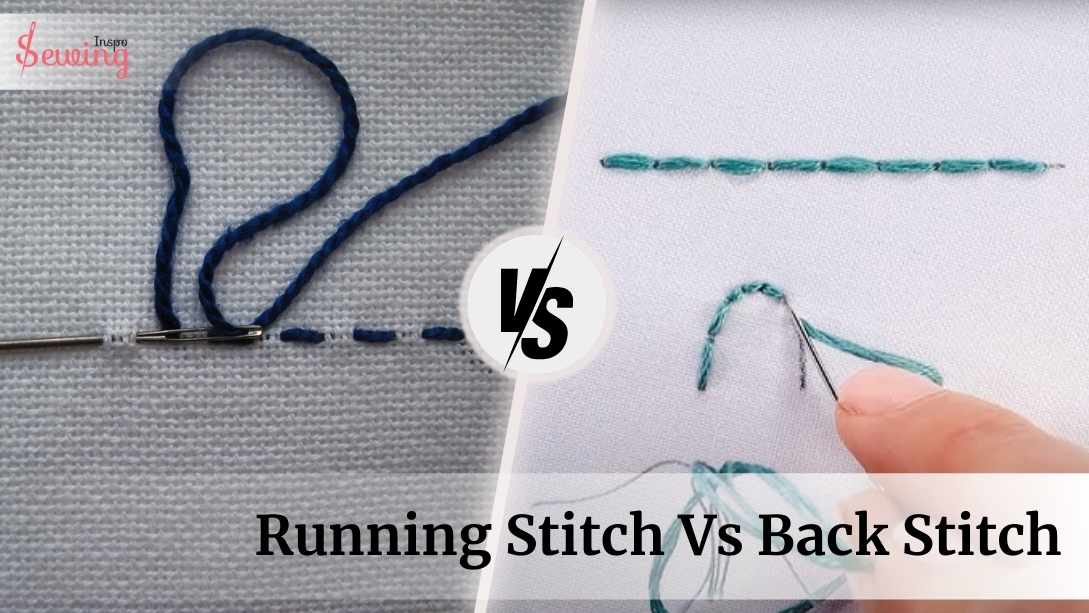
back stitch vs running stitch
The back stitch creates a strong, continuous line by overlapping stitches. The running stitch is a simple, straight stitch with gaps, making it less secure but faster to sew with thread tails.
But is that all there is to it? There are more differences between them. Let’s dive into learning all of those.
Main Facts of difference between running stitch and backstitch:
- The back stitch & running stitch isn’t the same.
- Running stitch is used for temporary holds & back stitch is used to secure.
- The back stitch is better compared to the running stitch.
Table of Contents
What Is The Back Stitch And Running Stitch?
The back stitch and running stitch are two classic hand-sewing techniques, each with unique purposes. The back stitch is known for its strength, creating a continuous, solid line by overlapping each stitch with the previous one.
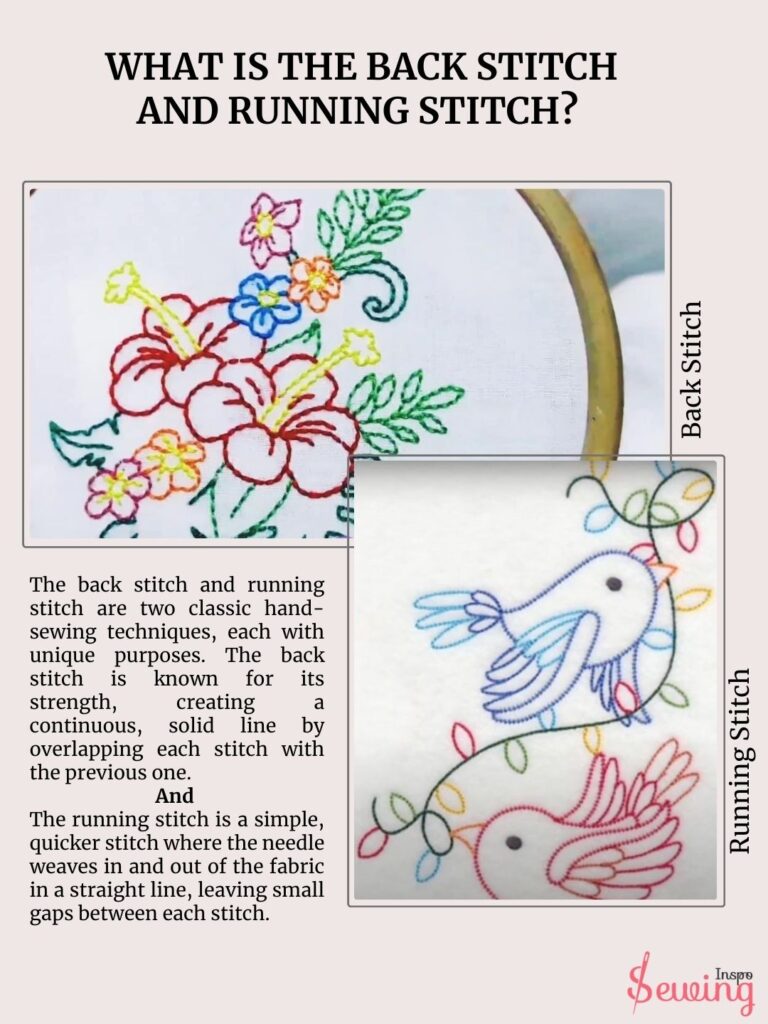
And
The running stitch is a simple, quicker stitch where the needle weaves in and out of the fabric in a straight line, leaving small gaps between each stitch. Similar to half stitch out.
Running Stitch Embroidery
Running stitch sewing machine or hand seams is easy,
but it can also create stunning patterns. For example, , see, isn’t it better than stem stitch embroidery?

Back Stitch Vs Running Stitch Image
If you are still confused then here if few images of both of them.
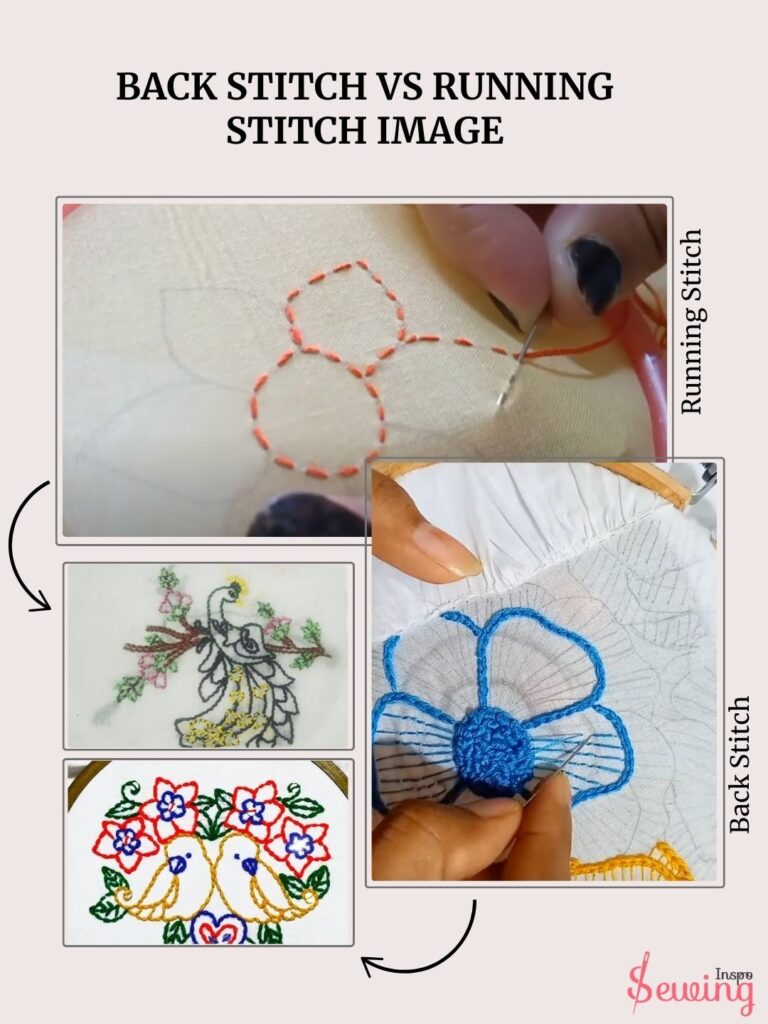
Is A Back Stitch And Running Stitch The Same?
No, a back stitch by hand and a running stitch are not the same. The backstitch is a common stitches. It is known strongest stitch by hand. And is often used for seam allowance and embroidery because it creates a continuous line of stitching with no gaps. That’s why backstitch embroidery is pretty famous. Back stitch is also the answer to how to sew a seam back together.
In contrast, the running stitch is straight stitching and quicker to execute, commonly used for gathering, basting, or simple seams.
So basically both serve different purposes. That’s the main difference between backstitch vs running stitch.
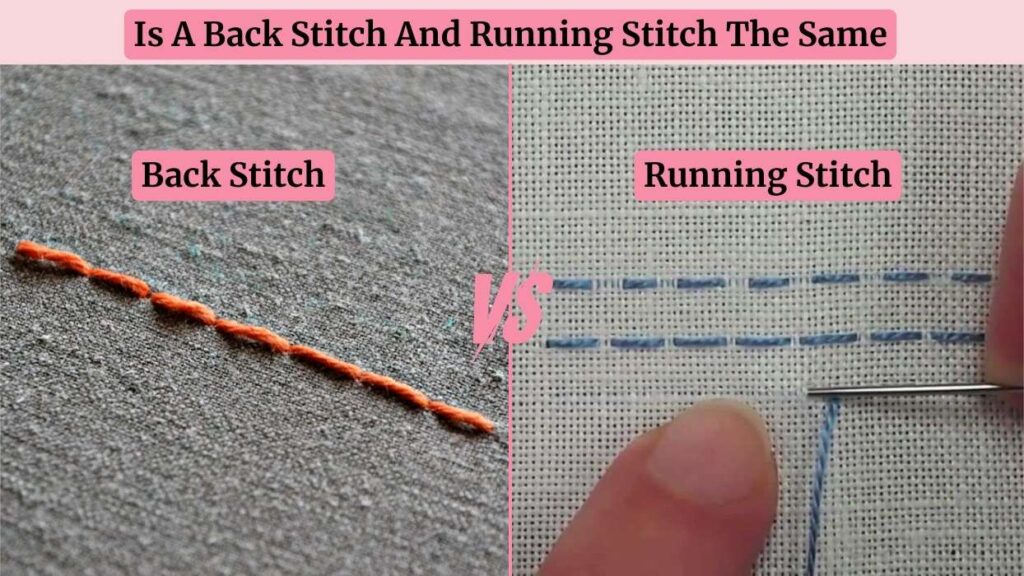
Back Stitch Vs Running Stitch: Key Difference
There is quite a lot of difference between running & back stitch. Just like it is in back stitch vs straight stitch. Such as: the key difference between back stitch vs running stitch-
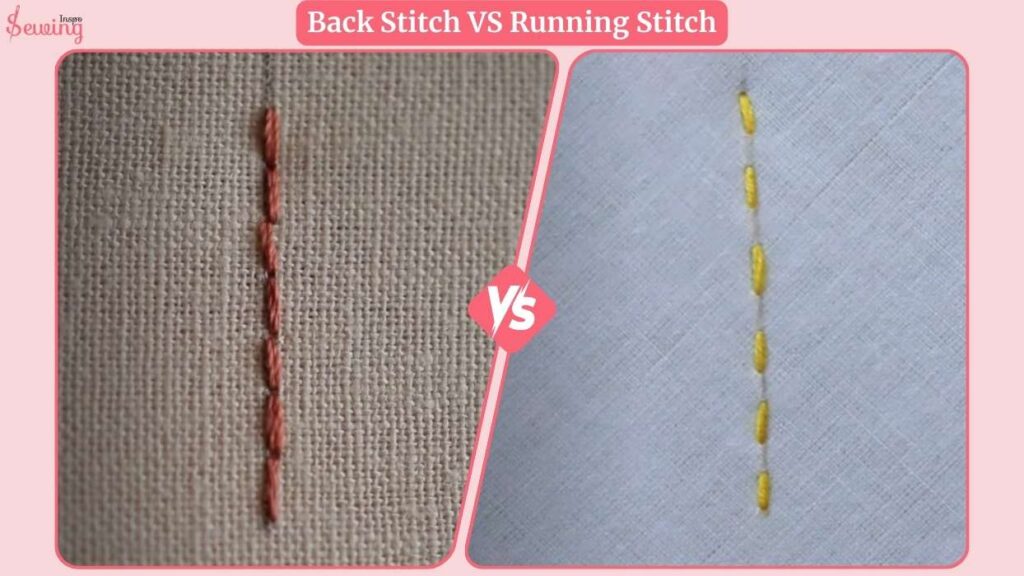
| Feature | Running Stitch | Backstitch |
| Appearance | Dashed line | Continuous stitch lines. |
| Strength | Weak, not suitable for high-stress areas | Strong, suitable for high-stress areas |
| Usage | Gathering, basting, quilting, temporary holds | Seams, embroidery, repairs, areas requiring strength |
| Technique | Weaving the needle in and out of the fabric at regular intervals | Needle brought up through the fabric ahead of the additional stitches. Then back down at the end of the previous stitch, creating an overlapping effect |
| Speed | Quick, easy to execute | Slower, more time-consuming |
| Durability | Less durable, not suitable for permanent seams | Highly durable, suitable for permanent seams |
| Stitch Overlap | No overlap, ¼ inch gaps between row of stitches. | Overlapping stitches, no gaps |
| Stitches per Inch | Normally 5-6 stitches per inch but it varies. | Usually small and tight with 18-19 stitches per inch. But the back stitch length depends. |
| Fabric Tension | Can be uneven if the stitches are not uniform | Even tension, creating a smooth seam |
| Common Uses | Temporary stitches, tacking down fabric, simple hemming, hand quilting | Permanent seams in clothing, reinforcing edges, decorative embroidery, mending tears |
| Skill Level | Suitable for beginners | Intermediate to advanced requires more precision |
| Visibility | Less visible, blends into the fabric | More visible, often used decoratively in embroidery |
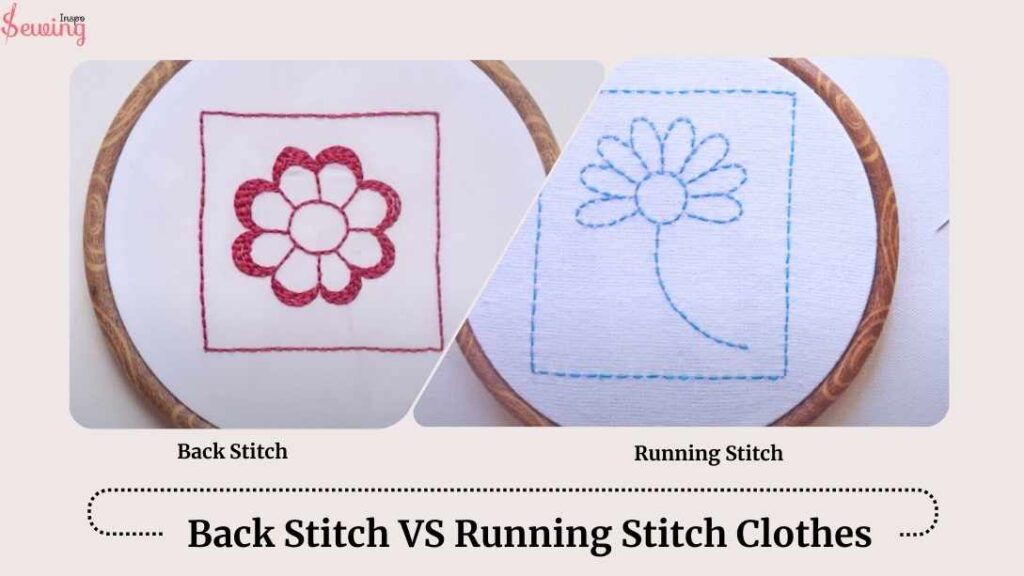
Is Back Stitch Stronger Than Running Stitch?
Yes, the back stitch is stronger than the running stitch! Here’s why:
The back stitch creates a more continuous line of stitching, with each stitch overlapping the previous one. This overlap makes the back stitch more secure and durable. It gives it extra strength for holding fabric layers together.
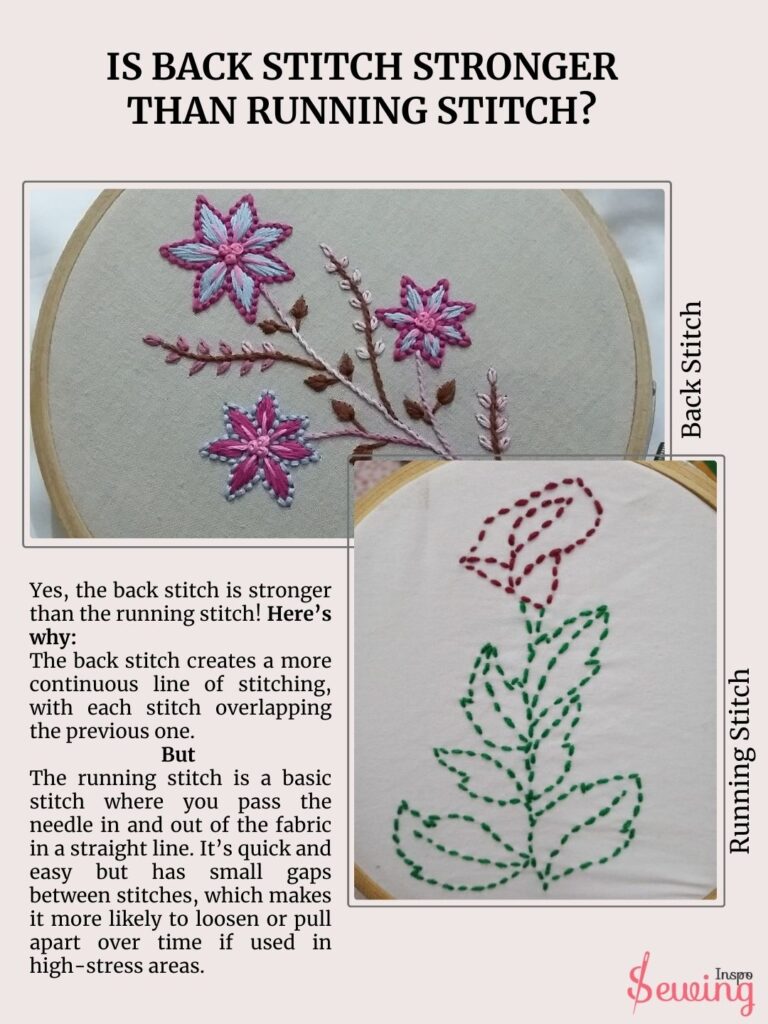
But
The running stitch is a basic stitch where you pass the needle in and out of the fabric in a straight line. It’s quick and easy but has small gaps between stitches, which makes it more likely to loosen or pull apart over time if used in high-stress areas.
So if you’re looking for strength—like for seams that will bear weight or get a lot of wear—back stitch is definitely the better choice!
Running Stitch And Back Stitch Patterns
Once, I had fun with this mix of stitches. I keep doing different kinds of patterns with it. Here, have a look:
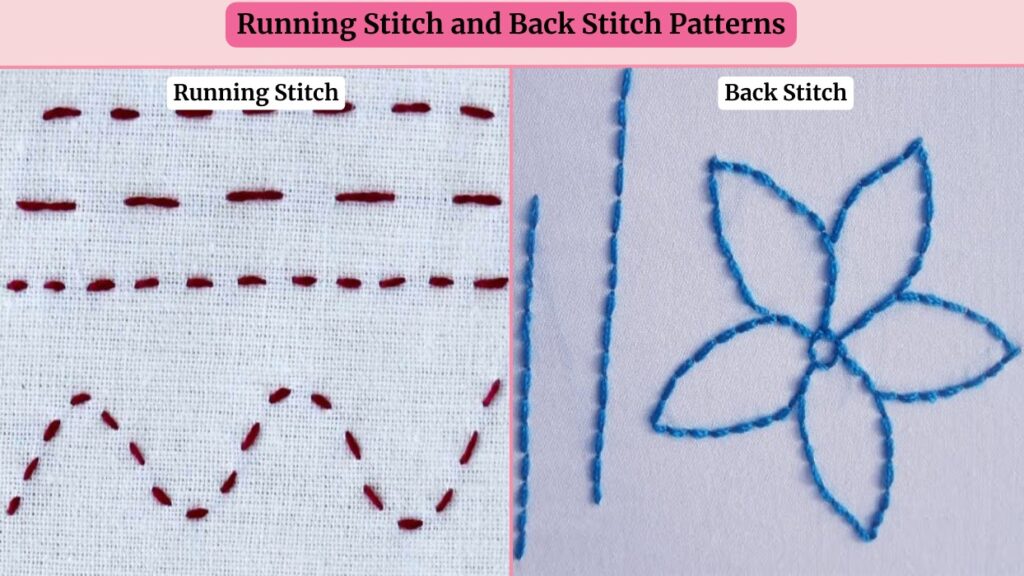
Running Stitch Vs Back Which One Stitch Good For?
The answer to this question depends on your project type. But logically-
The running stitch is ideal for lightweight, raw edge and temporary applications due to its simplicity and ease. It works well for tasks like basting or gathering, where a relaxed, less noticeable stitch is needed.

It’s suitable for delicate fabrics ( Chiffon, Georgette, Ninon, Lace) and straightforward designs.
However, its lack of durability makes it less appropriate for high-stress areas or seams that will undergo frequent use.
On the other hand,
The backstitch is preferred for projects that require strength and permanence. Its continuous line provides a strong, secure seam, making it ideal for detailed embroidery and intricate patterns.
It’s particularly effective for areas that will experience significant stress or wear, such as seams in clothing or sturdy accessories Or if you want to add some extra touch then do a Running Back Stitch.

The backstitch offers clarity and definition for detailed work, ensuring that the design remains intact and durable over time.
Running Stitch Vs Back Stitch Embroidery
Both stitches are quite simple but you still can make a great and eye catchy embroidery stitch.
Here are a few sewing projects I have done so far:
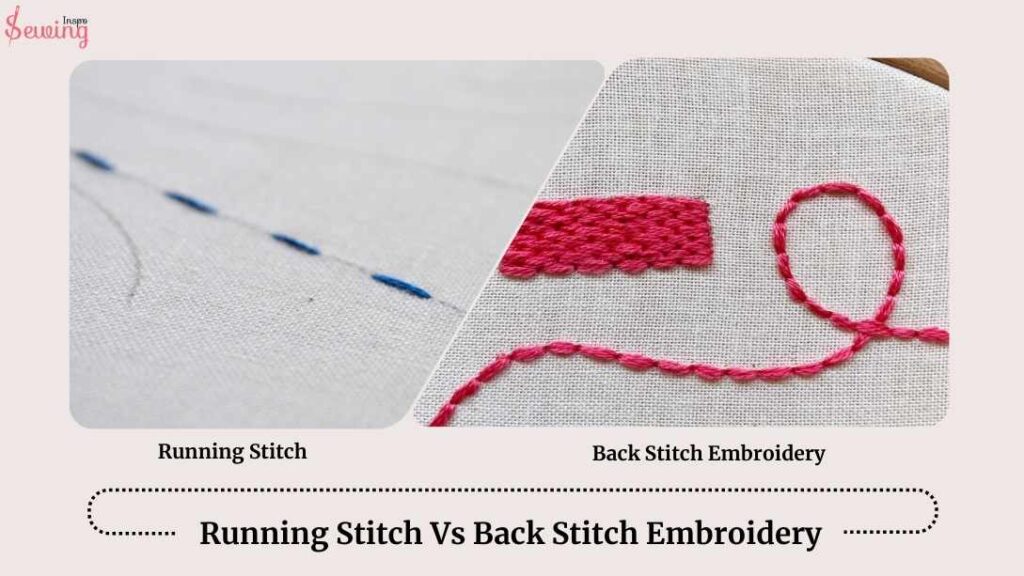
Embroidery Straight Stitch Vs Running Stitch
People not only mix running stitch with back stitch by hand. They also mix running stitch with straight stitch 50% of the time. Cause they also look the same. But the reality is different,
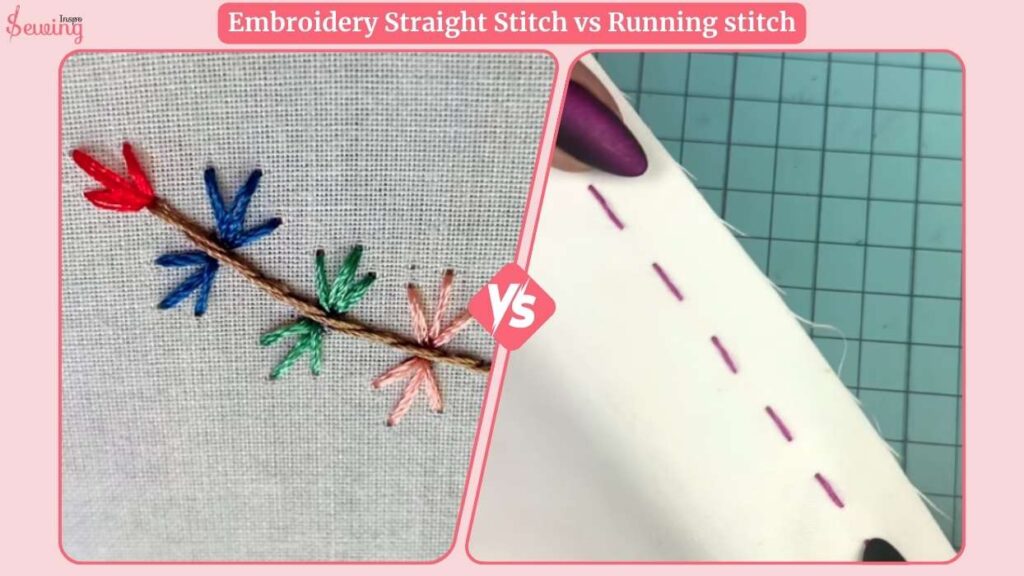
Straight Stitch: One stitch = one line. You bring the needle up, then down—done. It’s used for single, decorative marks (like stars, flowers, or texture).
Running Stitch: This one’s all about movement. It’s a series of evenly spaced stitches that go in and out of the fabric. Perfect for outlining shapes or even sewing seams. It looks like a dashed line 🟰 🟰 🟰.
Running Stitch Vs Back Stitch Difference In Video
I tried to make you understand the difference in writing. If you are still not sure then watch this video it’ll clear out your mind for sure.
Frequently Asked Questions
When To Use Running Stitch Vs Back Stitch?
Use a running stitch for light, delicate work, temporary holds, or simple designs. It’s ideal for quick, less durable applications. Use a backstitch when you need strong, defined lines for detailed embroidery, permanent seams, or areas that will experience stress and wear. The backstitch offers greater durability and precision.
Can You Use Running Stitch And Backstitch Together In A Single Project?
Yes, you can use both stitches in a single project. For example, you might use running stitches for lighter, decorative elements or outlines and backstitch for areas requiring more strength and definition. Combining the two can enhance both the aesthetic and functional aspects of your embroidery.
Warp Up
I hope I have cleared out your doubt about running stitch vs back stitch. And also gives you a clear idea of which one to use in which case.
If wanna stay up to date with information like this then stay with sewinginspo.

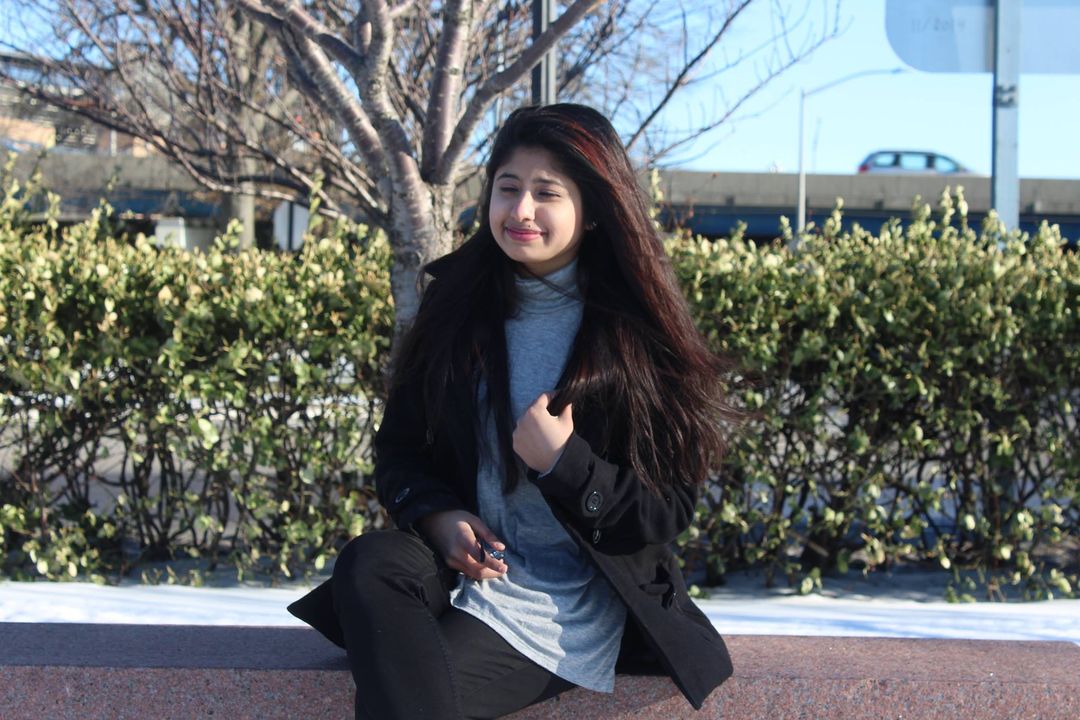
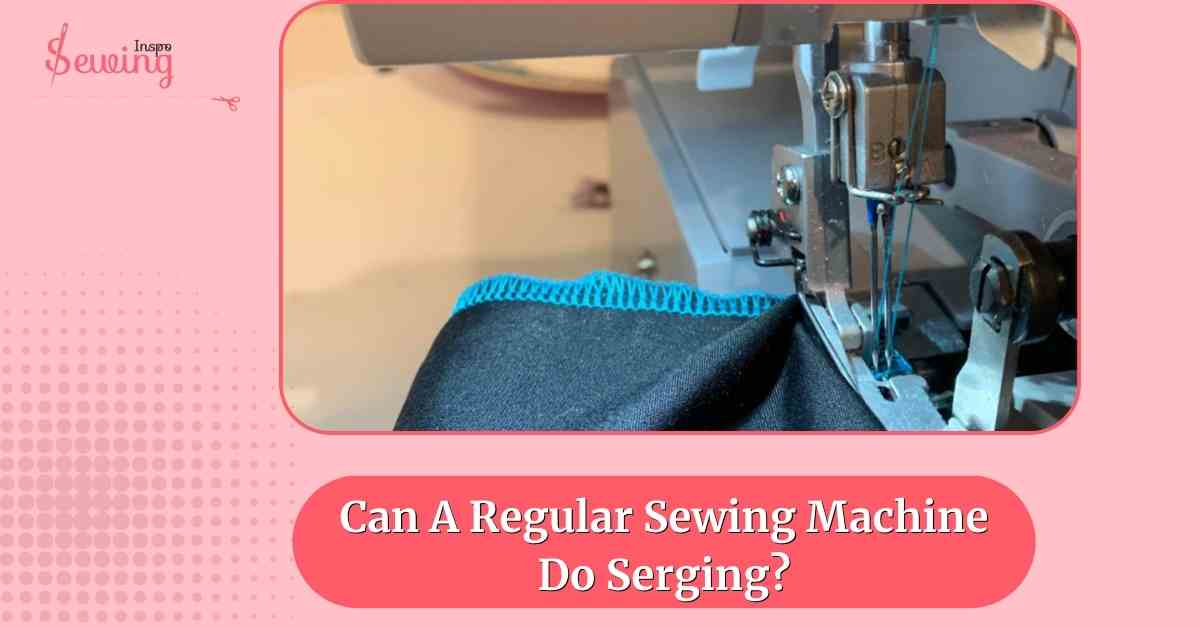
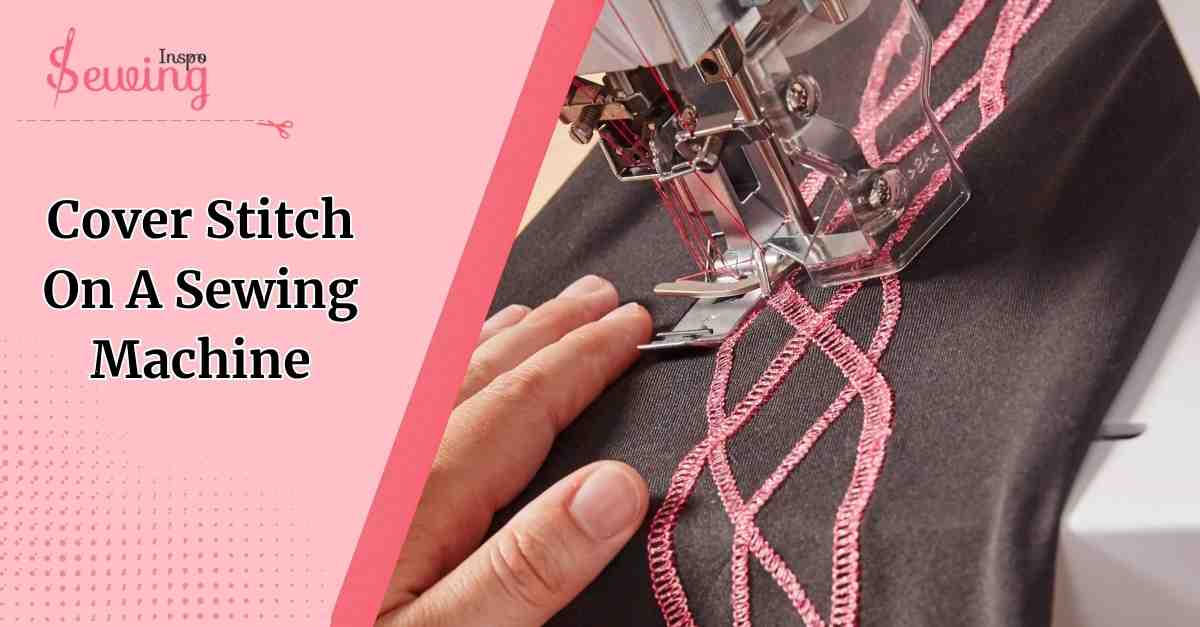
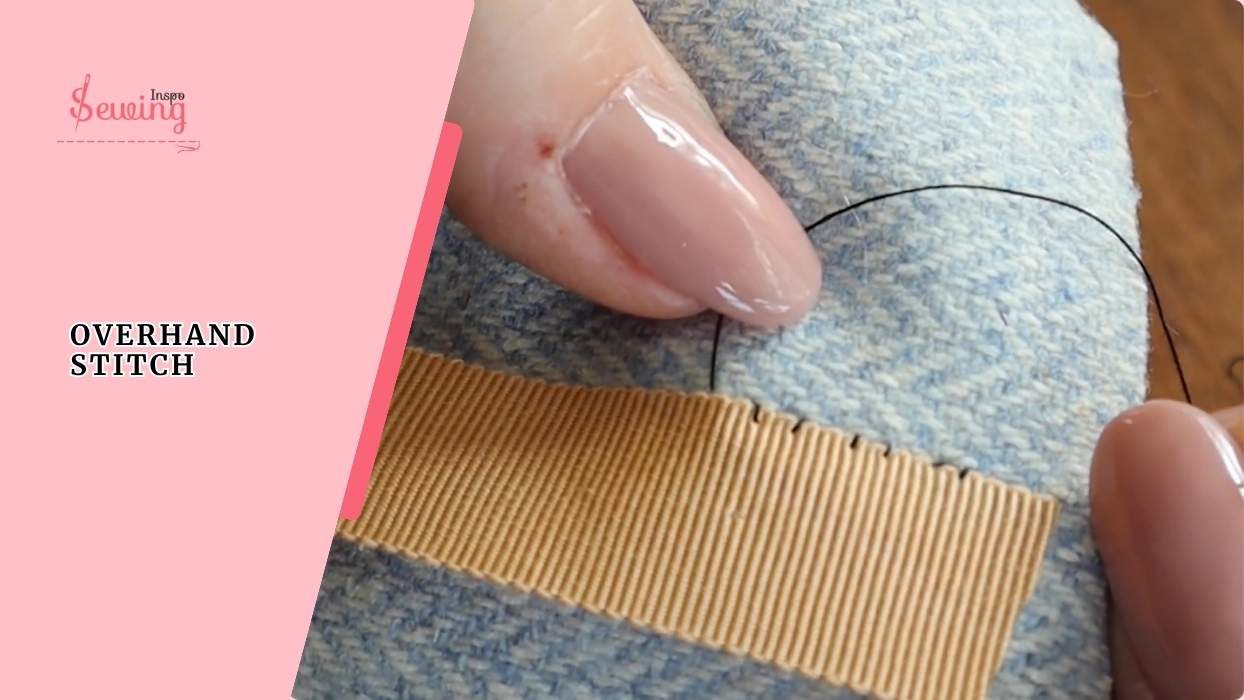
Leave a Reply